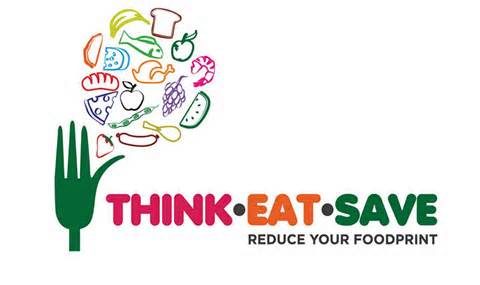In light of Earth Day that is coming up, I figured I should definitely write a post about reducing food waste in the home. Food waste used to be somewhat of a problem in my household. I was guilty of throwing out wilted lettuce, half a rotten cucumber, and expired yogurt more often than anything else. However during the last year my family has made a conscious effort to use all the food items that we purchase as to not let food go to waste. Although we have collectively gotten better as a family, there is definitely more that we can all do to reduce the amount of food that goes in the trash and compost.
In 2013, the Food and Agricultural Organization (FAO) estimated that nearly one-third of all food produced is lost or wasted by consumers, food retailers, hotels, and restaurants. The United Nations Environmental Program (UNEP) added that the amount of food wasted is more than four times what is needed to end the world hunger crisis. Unfortunately, despite knowing that people are dying from hunger, we tend to take the food we are lucky enough to have for granted. Admittedly I was one of those people until I started to make a conscious effort to change.
Here are 11 tips for reducing food waste in your home that worked for me:
1. Plan out your meals, make a grocery list, and ONLY buy what you need. This way you will save food from going bad and also save money on things you don’t need. If you have a vegetable or a few ingredients that need to be used up, buy ingredients that will complement what you already have.
2. Freeze fruits that are overripe if you cannot eat them rather than letting them go rotten. Make sure to clean and peel fruits, such as bananas, before freezing. Frozen fruits are great for making smoothies, adding to baked goods such as banana bread and muffins, and for making popsicles.
3. Steam, roast, cook your vegetables rather than leaving them raw in the refrigerator (unless you eat them raw). This way you are more likely to use the vegetables in your meals or while packing school lunches, rather than leaving them to rot.
4. Don’t buy perishables in bulk. A package of four red peppers for only $3.97? In the past I went for deals like these. But who out of my family of five likes red peppers? Only me! As a result, I would end up throwing ones that had gone bad. If you do chose to buy in bulk, wash, cut and freeze the extra. That way you can have vegetables already prepared to add to your soups, pasta, and stir-frys.
5. Buy spices from bulk stores, where you can get the amount you need for your recipes. Spices tend to loose their aroma over time, and so if you only need a small amount for a new recipe, visit a store like Bulk Barn.
6. Store foods properly to increase shelf-life. For example, onions, potatoes, and garlic should be stored in a dry, cool, and dark place, not the refrigerator. Fruits should be stored at room temperature, until they are almost ripe. Ethylene-releasers such as apples should not be stored with ethylene-sensitive foods such as bananas and leafy greens.
Check out this amazing article by Vegetarian Times for information on how to correctly store fruits and vegetables.
7. Practice portion-control. Only put your plate, what you can eat. If you are still hungry, you could always go back for seconds. But if you are full, halfway through, you have no choice but to throw out what is left on your plate.
8. Use chicken bones and cleaned vegetable trimmings to make your own soup broth. Making your own broths gives you full control over the amount of salt that goes as well as the quality of the ingredients.The flavour of home-made broths doesn’t even compare to the ones in containers that you buy at the store!
9. Make a smoothie. This is a great way to use up leftover milk, yogurt, fruit that is too ripe to eat, and even those few leftover leaves of spinach, kale, or lettuce. You can even freeze the smoothie in popsicle molds for a special treat.
10. Get creative with leftovers. Leftover chicken breast from last night? Use it in a salad for lunch or in a sandwich. Leftover vegetables? Use it in a pasta, stir-fry, vegetable sauce, or curry. If you child brings home leftovers from their school lunch, let them eat it as snack, afterschool.
11. Organize your refrigerator. Stick by the rule, first in, first out. Whatever you buy first, eat it first to prevent it from going bad. Also keep things that will go bad fast near the front, where you can see them. Keeping a container of that leftover half an onion, or carrot, or potato in sight, allows you to use up those leftover fruits and vegetables without forgetting about them and then throwing them out once they have gone bad.
12. Keep a composting bin. Throw all your kitchen scraps, from vegetable and fruit peels to egg shells, and teabags in a composting bin with a lid. When the bin is full, transfer the scraps to your composter. Composting these scraps gives you nutrient-rich humus to use in your garden!
Click here to learn more about composting.
I hope these tips help you and your family reduce food waste in your homes. If you have additional tips, please share them in the comments below!
Feature Image: en.mercopress.com



